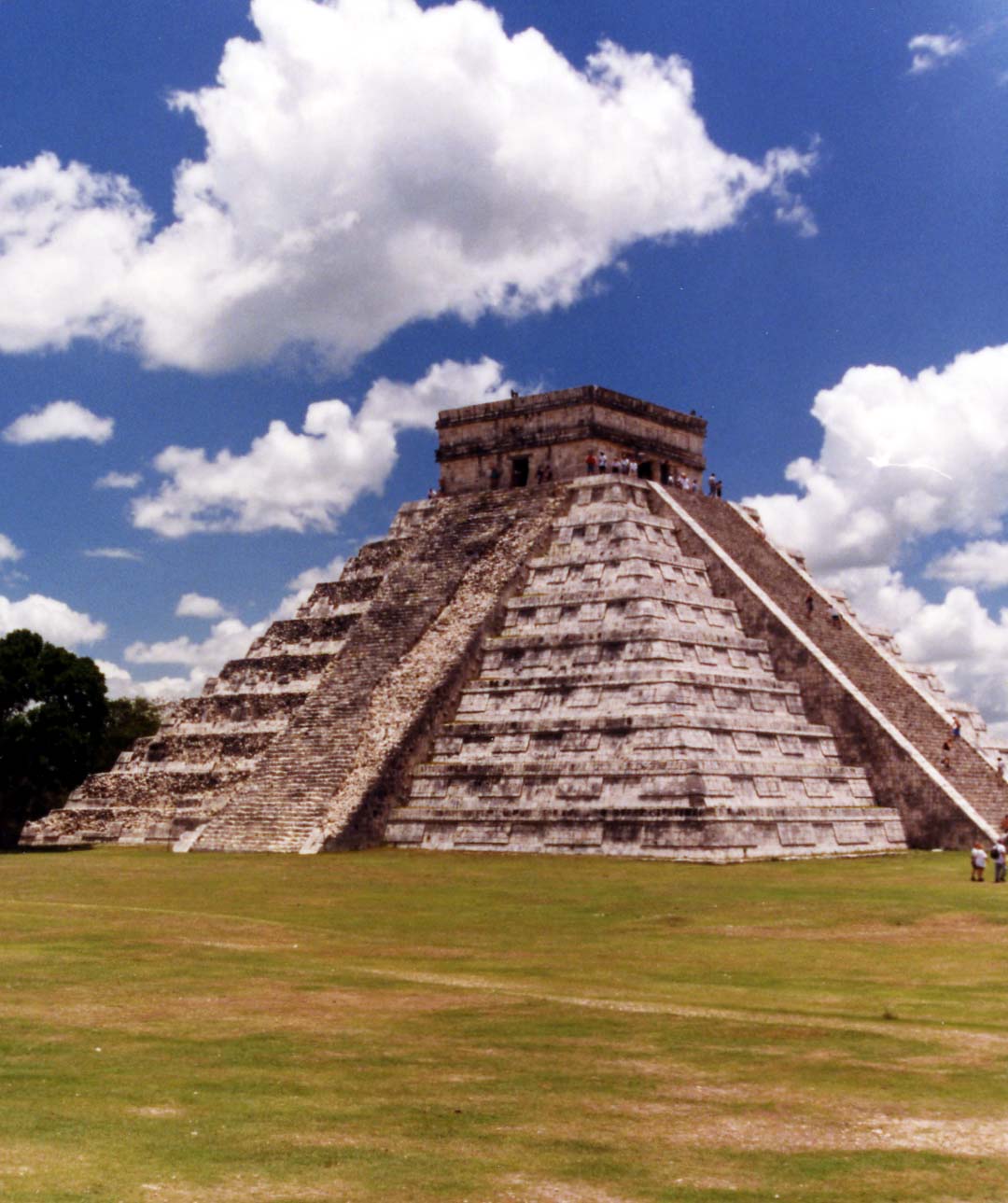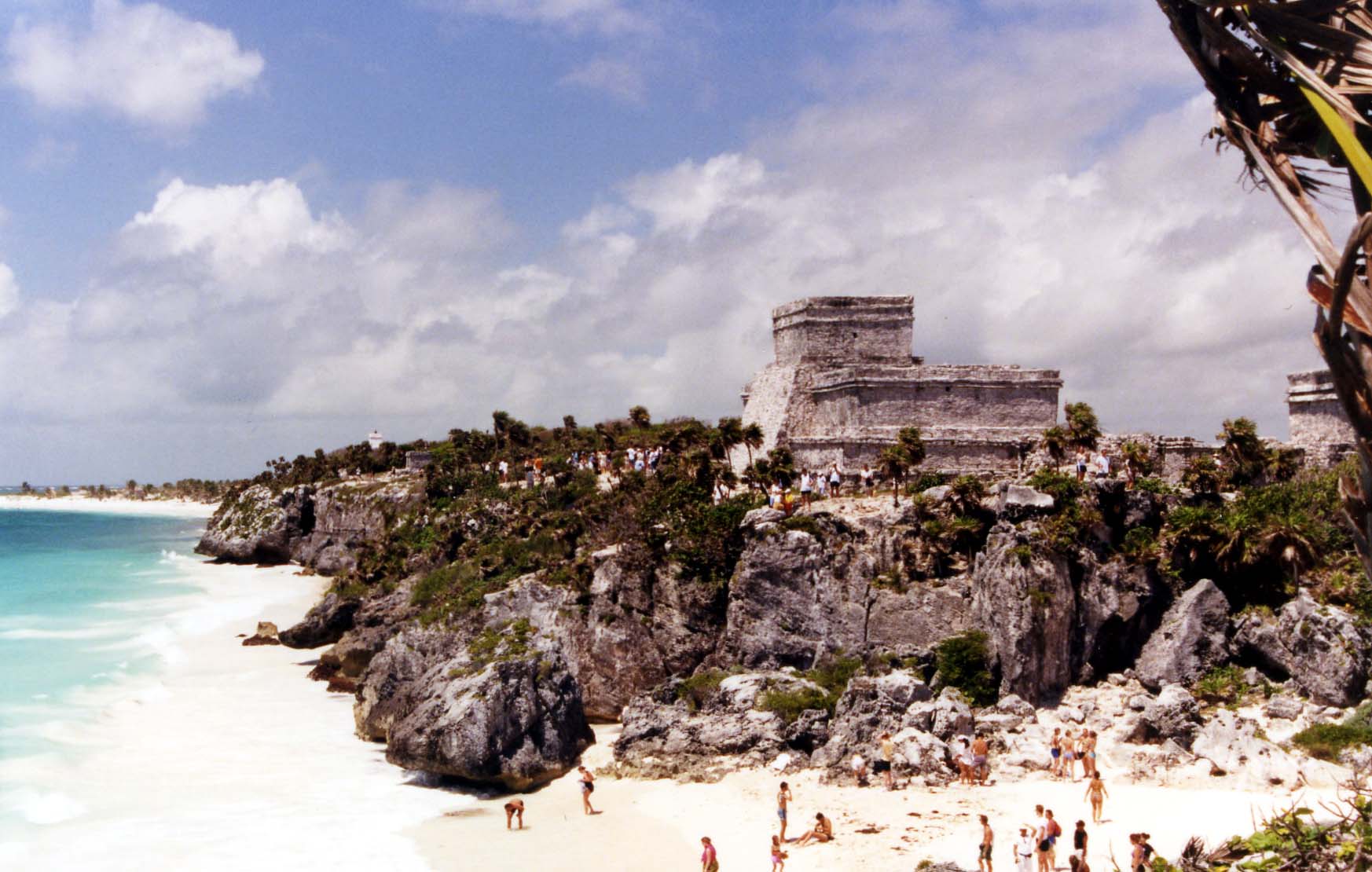
A BRIEF HISTORY OF MEXICO

A BRIEF HISTORY OF MEXICO
Mexico is a rich tapestry of ancient civilizations, diverse cultures, colonial cities, exquisite landscapes and traditions of dance, folk art and songs. It is a country steeped in history where the past meets the present and every place presents the drama of living archaeology.
Long before the arrival of the first Europeans, the peoples of ancient Mexico developed complex civilizations with brilliant achievements in agriculture, architecture, astronomy, mathematics, hieroglyphic writing and military strategy. Over 115,000 registered archaeological sites document a fascinating Pre-Columbian past. The Olmec culture is thought by some to be the mother culture of Mesoamerican civilization. They lived around 1200 to 800 BC on the Gulf coast lowlands of southern Veracruz and Tabasco. They were accomplished stone sculptors who developed a system of numbers and a prototype for the Maya calendar. However, some archaeologists believe that Olmec sites may have been colonial outposts organized for trade between the coastal lowlands and the central highlands where newly discovered artifacts predate the Olmec period by as much as 400 years.
 |
El Castillo Chichen Itza |
The Mexican landscape is characterized mainly by extensive mountain ranges. Early Spanish explorers found over a hundred different indigenous peoples who developed independent cultures due to the rugged and isolated nature of the land. The most densely populated region is the central highlands around Mexico City where a network of snow clad volcanoes ensure fertile, volcanic soils that today support a half of Mexico’s population in one tenth of its total land area. Throughout history, many groups have maneuvered for dominance of the region but the most notable were the Aztecs who greeted the conquistador, Hernan Cortes, in 1519. They rose to power in the early 15th century and were fierce warriors who expanded the reach of their empire through exceptional military skills. They were also accomplished engineers who built aqueducts, sewage systems, irrigation canals and dams.
Accompanied by thousands of allied tribes, Hernan Cortes and a Spanish contingent of just over 900 men defeated the Aztecs in 1521 to claim New Spain for the Spanish Crown. Bernal Diaz del Castillo, a soldier, attributed the victory to ‘the guidance of God’ but the Spanish clearly possessed superior arms and military organization. Besides, the primary Aztec battle objective was to capture prisoners while the Spanish were motivated to die fighting rather than to have their hearts ripped out as sacrifices to the Aztec gods.
 |
Jade Encrusted Jaguar Chichen Itza |
The colony of New Spain rapidly outgrew the initial borders of the Aztec Empire. Spanish kings encouraged the exploration of new lands by granting conquistadors the right to establish settlements in exchange for one-fifth (el quinto real, the royal fifth) of any treasure discovered. The conquistadors were expected to finance their own expeditions so there were practically no costs or risks incurred by the Crown. These early explorers hoped to recoup their investment by plundering native tribes, finding new mines and capturing fertile lands. The Spanish encomienda system provided the colonists with rights to the labor of native peoples who should have been paid and protected. Instead, they were practically enslaved. Harsh labor, malnutrition and European diseases decimated their populations from 25 million to less than 2 million in the subsequent century.
Although disastrous for native Americans, the conquest of New Spain proved to be lucrative for the Spanish. Discoveries of large silver deposits served as a magnet for immigrants who numbered over 300,000 in the ensuing 250 years. Much of the wealth was held by the peninsulares who were the Spanish born elite that formed the ruling class. Many were appointees of the Crown or high ranking members of the clergy and their great wealth can still be seen in the opulence of Mexico’s colonial architecture, especially among the Silver Cities that grew around major mining centers.
The availability of inexpensive land attracted other Spanish immigrants who sought the social status afforded to land owners by Spanish society at that time. These permanent settlers gave rise to two distinct social classes. Criollos were people of pure Spanish descent who were born in New Spain. Although they were usually limited to the lower echelon of their professions with little political power, many acquired great wealth and economic influence. It was this class, in response to increasing taxes and regulations by the Crown, that initiated the 11 years of rebellion to claim independence for Mexico in 1821. After the expulsion of the Spanish, criollos became the ruling class of Mexico.
 |
El Castillo Tulum |
Indigenas still occupy the lowest rung of Mexico’s social structure and recent uprisings in the Chiapas area tell of their ongoing struggle. Coupled with Mexico’s financial problems, some foresee a bleak future for these native peoples. Mexican poet and philosopher, Octavio Paz, once bemoaned "the perversion and destruction of traditional culture." He noted that whenever displaced Indigenas move to the cities, they forsake their traditional culture to embrace forms of an industrial culture that "are inferior to those of the US and Europe." Fortunately, efforts are now being made to preserve their rich traditions of land stewardship, herbal medicines, and social harmony.
Today, Mexico remains wealthy in natural resources. New methods of extraction have allowed the reopening of many old mines. Petroleum fields gush 3 million barrels of crude oil per day. Vast stretches of desert lands have become productive due to irrigation. A burgeoning industry in tourism is supported by over 6,000 miles (10,000 kms.) of beaches bordering both the Pacific and the Caribbean, lush tropical jungles, ancient ruins and the largest canyon system in North America. At the dawn of the 21st century, Mexico now has the opportunity to tap the wealth of her native peoples who have preserved their cultures better than other native Americans, to achieve the longed for balance between industrial/technological achievements and the stewardship of land and communities.

Adventures Great and Small © copyright 1996-2005